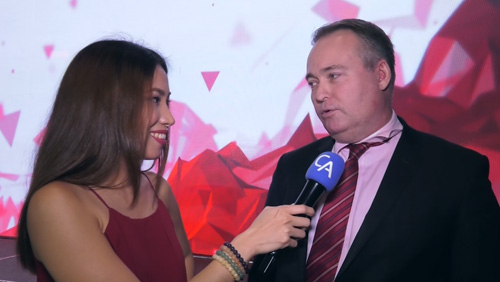Casinos are always innovating, remodeling, re-arranging their floors, and introducing new products to excite potential customers. What most don’t realize though is the next leap forward in casino technology is already happening, and it’s hidden away behind the table. Brad Waldron, the Group Head of Table Games Optimisation for Crown Resorts Melbourne, joined CalvinAyre.com’s Stephanie Tower to talk about important advances in data optimization.
Applying better technology to data gathering is becoming the obvious move for casinos to improve their bottom line. “I think casinos have come a long way in recent years and they’re now looking at data as being quite a valuable asset, as are most businesses across the world,” said Waldron. “What we’re finding is that most data at the moment is collected manually, so therefore it’s costly, it’s infrequent, and also subject to a lot of subjectivity of the people collecting the data.”
Now that casinos are applying smart technology, with more cameras watching the play in more ways, the data is proving to be invaluable. “The data basically also shows us dealing speeds, so we can basically use it from a coaching point of view,” he explained. “Dealers that maybe not reaching benchmarks we can provide more training, increase their speeds. In terms of more profitability, that comes down to using that data. So building potentially good algorithms to optimize our floor. And that’s basically product mix, so designing your floor, what products go where, also what tables open, when they close, also price points, which is all part of the big optimizing bubble.”
This is providing the opportunity for tables to advance in technology in ways they haven’t in decades. “I think what the technology will allow us to do is offer way more interactivity onto a table,” Waldron shared. “So for example, you know more about what is happening, we can offer live betting on a table, for example. Let’s use blackjack, for example. Once you have your card, the dealer has their card, there may be an option where, ‘Do you still think you can beat the dealer?’, and have odds offered at that, because the technology to be able to see the cards, understand the cards, and make that decision.”
Privacy minded customers might be worried that those types of advances might be a bit too intrusive, but Waldron explained that those fears are overblown. “The data at the moment doesn’t specifically link to any particular patrons,” he noted. “All of our data is anonymous and is captured as a whole. I guess in the future, when we start doing things like facial recognition and matching bets to particular people, then that will be a different situation.”
Besides, the futuristic idea of a constantly surveyed table opening up new gambling opportunities is still down the road. Right now, it’s all under the hood. “It’s very much hidden behind the table, so from the customer point of view, they actually don’t know what’s happening,” he said. “They don’t realize that it’s just hidden away; it’s cameras, well-hidden cameras. So I think from a customer point of view, they don’t know about it yet.”
This new approach to data is already proving to be profitable for the operator, but the real telling story will be if customers buy in when they see more from their end. “What we tend to find is that the customers will other embrace it, or not,” Waldron said. “We do a lot of customer surveys; everything we put on the floor, we do a lot of testing beforehand. Even if customers love it in the survey, come to the floor and actually part with their own money, it’s a very different situation.”
